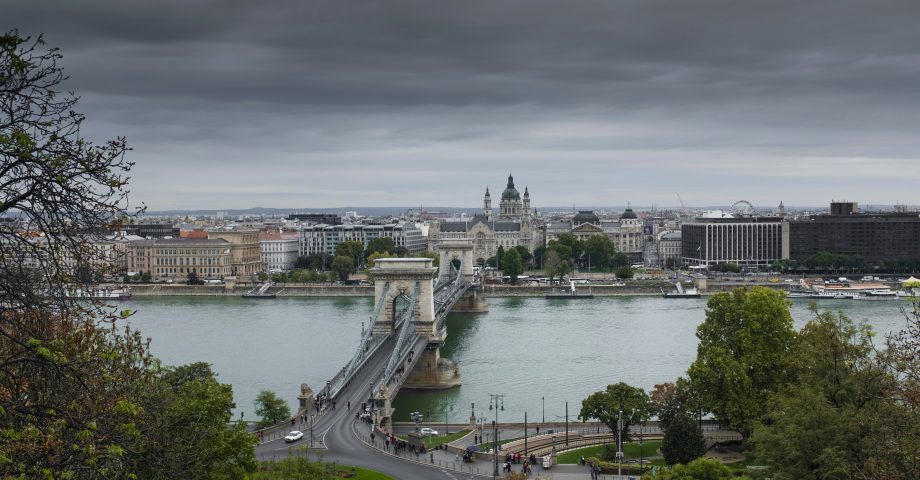It’s one of the longest rivers in Europe – but that’s not all that the Danube has going for it! This majestic body of water flows through several different countries, and often plays a part in many photo opportunities and tourist spots! Here are some fun facts about the Danube River that you may not already know.
1. Not quite the longest!
At a staggering 2,860km long, you’d expect the Danube to hold some sort of record for length. Yes – it’s a looooong stretch of water – but it’s actually second in length behind the mighty Volga, if we’re talking the whole of Europe!
Luckily for the Danube, it does still hold the record for the longest river in the European Union!
2. A cross-continent delight.
The Danube flows freely from its source in Germany’s Black Forest, winding all the way down towards the Black Sea beyond Romania. Its source is actually a twin stream, which combines in Donaueschingen. There’s even a monument there to show where the Danube officially ‘starts’!
3. A city tourist!
The Danube takes in four major European capital cities on its route from Germany through to Romania. These include Belgrade, Bratislava, Budapest, and Vienna.

4. We’ve been sailing the Danube for many, many years.
Danube river cruises first started in the 1800s, making use of the emerging steam engine to entice tourism across the continent. In fact, the maiden steam voyage on the Danube debuted in 1830, cementing the region as a must-visit for waterside wanderers.
5. Take in a Danube safari!
Wildlife in and around the Danube is truly magnificent. Across the river’s route, you’ll be able to see cormorants, pelicans, weasels, snakes, and otters. It’s even home to a few large predators – such as the black bear and even a few wolves!
6. It’s something of a cultural icon.
Thanks to its ability to connect multiple cities together, the Danube’s long since held a place as something of a cultural hotspot. It’s been featured in many films, books and songs – and even held a place in some legendary stories of old. Perhaps most famously, it’s the subject of Johann Strauss’ iconic Blue Danube, a waltz that you’ll likely recognise if you heard it!
7. It provides water to millions of people across Europe.
As well as being a sight for sore eyes – and a wonderful tourist spot on its own – the Danube is vital for the survival of millions of people Europe-wide. It’s actually thought around 20 million people or more use the Danube river for fresh drinking water.
8. The Danube was once rife with sunken warships.
At the outset of World War II, German forces used the Danube to their advantage by submerging warships along their routes deeper into Europe. It’s thought German warships sunk beneath the river to avoid detection from the roving Soviet Union. Interestingly, you can still see some sunken warships beneath the surface to this day – it’s something of a nautical graveyard!
9. It was crucial for Roman transportation.
While the Danube has historically been used to help transport people to and from the Black Sea for centuries, it was the Roman Empire that really put the waterways to creative use. Specifically, Roman armies used to develop outposts along the river!

10. UNESCO loves the Danube.
The Danube Delta, in particular, has caught the attention of UNESCO for a place on their hallowed World Heritage list. It claimed the honour back in 1991 – and rightfully so – as it’s here where you’ll see hundreds of bird species and scores of different freshwater fish.
FAQs about the Danube
Where does the Danube flow through?
The Danube flows through a total of ten different countries. This includes Germany, Croatia, Austria, Hungary, Slovakia, Bulgaria, Serbia, Moldova, Ukraine, and Romania. It starts in Germany and ends in Romania.
Are there snakes in the Danube?
Yes! The Danube is home to several different species of snake, with some of them being fairly venomous. It’s best to try and stay on board any boats or liners you take down the river - trust us on this!
Are Danube cruises affected by the war in Ukraine?
Unfortunately, yes - many cruises that would traditionally take tourists across the Danube had to halt services as a result of the Ukraine-Russia conflict, which started in early 2022.
Further reading:
https://facts.uk/tag/danube/
https://en.wikivoyage.org/wiki/Danube/
https://www.rivieratravel.co.uk/blog/2022/11/25/map-of-danube-river/
Do you know any fun facts about the Danube? Share them in the comments below!









